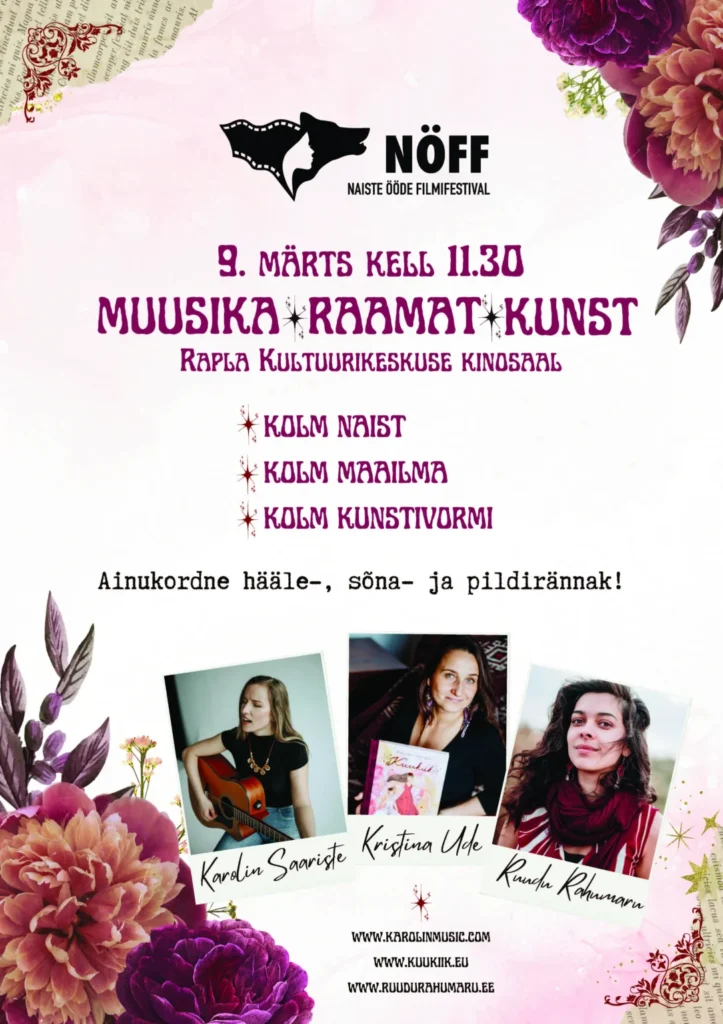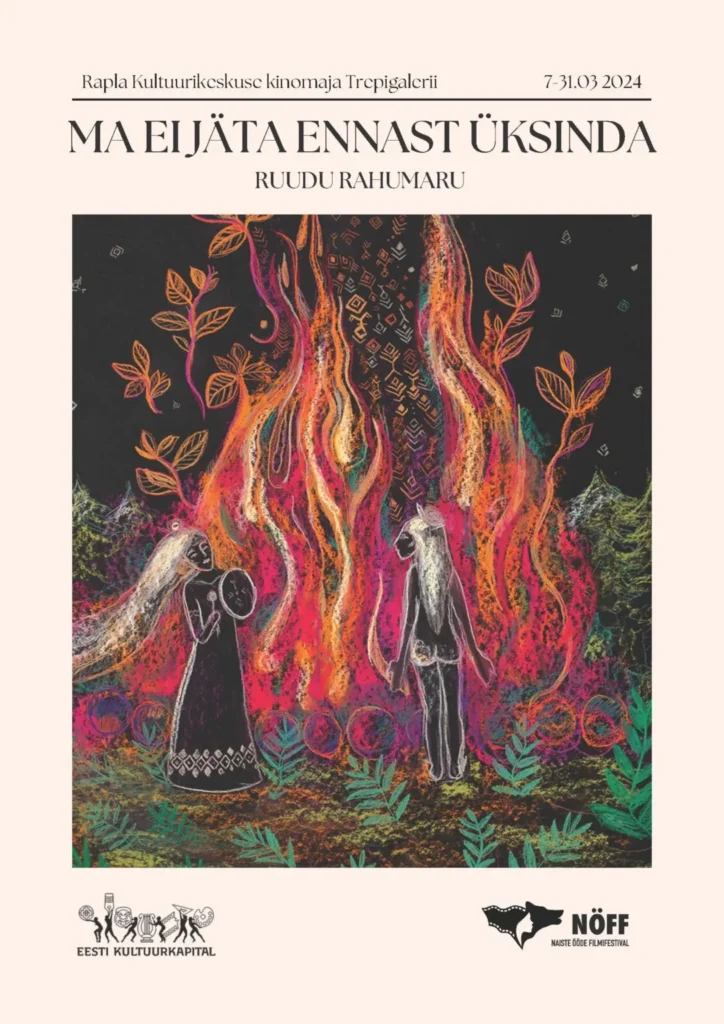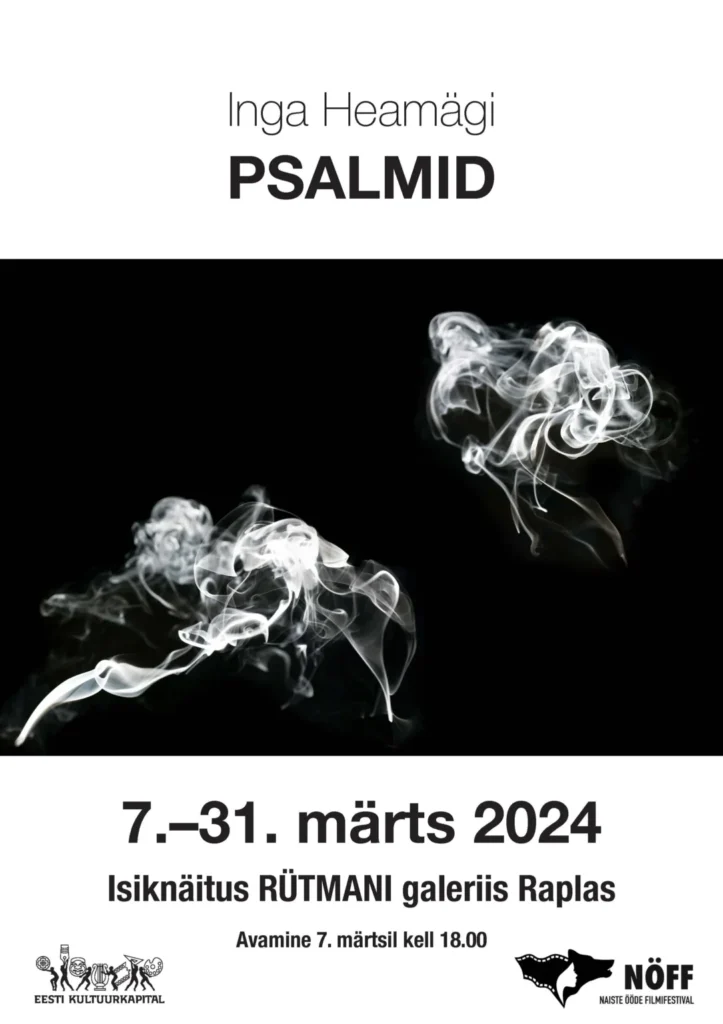
Konflatsioon
Maailm on äärmiselt eripalgeline – erinevad arvamused, vaatenurgad, kultuurid, rassid, religioonid jms. on järjest rohkem segunemas ja tundub, et kõigi meie mugavaks äramahutamiseks ei jätku enam ruumi.
Kitsikuses hakkame põrkuma, näeme, et meie arvamus ei ole enam ainuke ja seega ka automaatselt ainuõige.
Edasieksisteerimiseks tuleb muutuda – kas kapselduda ning kolida oma “mulli”, reageerida jõu ja vägivallaga või proovida mõista ning ehk ka aktsepteerida, et võimalikud ja võib-olla ka vajalikud ongi ka teistsugused arvamused, teised kihistused.
Erinevused võivad rikastada, muuta meie maailma palju põnevamaks ja rohkem elusolevamaks. Mõista soovimine võib tekitada hämmeldust, uudishimu, äratundmist. Ehk mitte alati rõõmu, aga rahu iseendas – mõjub ju kuidagi vabastavalt, kui lubame maailmal mitte olla monokultuurne, mitte koosneda kloonidest.
Oma konflatsioonides uurime ja näitame erinevaid kihte, analüüsime nende minevikku ja tulevikku, nende omavahelist mõju ja kokkusulandumiste võimalusi.
Simone Fezer on saksa klaasi- ja installatsioonikunstnik.
Ta on töötanud tuntud kunstnike assistendina ja õppinud erinevates rahvusvahelistes koolides, nagu Penland School of Crafts ja Centro Studio Vetro Itaalias. Ta oli 2016. aastal residentuuriks Tacoma klaasimuuseumis Washingtonis USA-s ja 2020. aastal Norras Bergenis galeriis S12. 2019. aastal pälvis ta Philadelphia Kunstiülikooli rahvusvahelise Irvin Borowsky auhinna.
Ta on õpetanud skulpturaalset klaasi Saksamaal Stuttgardi Kaunite Kunstide Akadeemias ning eksponeerinud oma peamiselt suuremahulisi klaasi- ja segameedia installatsioone nii riiklikul kui ka rahvusvahelisel tasandil.
Simone Fezer käsitleb oma töös terviklikult kogu elusolemise ja elukeskkonna üldist haprust ja omavahelist sõltuvust ning loob interdistsiplinaarseid ning kaasahaaravaid keskkondi. Talle meeldib teha koostööd teiste kunstnikega, pannes kokku installatsiooni, performance’i ja multimeedia ning luues omamoodi lavasid või lavastusi, kuhu sisenedes vaataja saaks uurida, avastada ja kogeda.
Kai Koppel on eksperimenteeriva vaimuga kunstnik ja on alates 1975. aastast töötanud klaasikunstnikuna. Tema varasemad teosed olid ruumilised klaasobjektid. 1980. aastatel rajas noor klaasikunstnik Kai Koppel oma suuna vastandumisele, alustades isiklikku mässu klaasikunsti konventsioonides kehtestatud väärtuste vastu. Ratsionaalsele, geomeetrilisele ja funktsionaalsusele vastandas ta ebaratsionaalsuse ja töömeetodi, milles palju ruumi jäeti juhusele ja kuuma klaasi enda väljendustahtele. Tarbijalikkuse asendas Koppel sümboolsete väärtustega, kasutades ohtralt loodusvormidest ja arhailistest arhitektuuriajajärkudest ammendatud eeskujusid, erilist tähelepanu äratasid tema suured vertikaalsed, kohati arhitektoonidena mõjuvad dekoratiivvormid. Ta on kunstnik, kelle jaoks on oluline protsess, klaasivalmistamise erinevad režiimid ja tehnoloogiad.
Kati Kerstna on sotsiaalselt tundlik kunstnik, kelle viimaste tööde fookuses on keskkonnateemad. Talle meeldib kasutada klaasi vastandlikku karakterit oma teemade visualiseerimisel. Hapruse ja tugevuse piire kompav kombinatsioon, läbipaistvad peegeldused, reflektsioonid ja valgus kuuluvad tema töövahendite hulka. Loodud vorme võiks määratleda skulpturaalsete installatsioonidena, objektidena, milles samaaegselt on eksponeeritud nii ruum, vorm, kui illusoorsus.
Kati Kerstna on samuti tegev kuraatorina ja viinud Eesti klaasikunsti näituseid mitmel korral ka Eestist väljapoole. Praegu on ta Balti klaasikunsti näituste korraldamise töörühmas eestipoolne kuraator. Samuti seob teda nii Kai Koppeli kui Simone Fezeriga pikaaegne koostöö Haapsalu Klaasipäevade korraldamisel.



Näitus PSALMID koosneb kahe seeria töödest, mis olid üleval 2019. a Draakoni galeriis Tallinnas ja 2021. a Tampere Majas Tartus.
Seerias Olgu mu palve, kui suitsetamise rohi Su palge ees (Psalm 141:2) olen oma tööde teostamisel kasutanud küünlasuitsu, õigemini seda imelühikest hetke, mis jääb leegist järele pärast selle kustutamist. Tekib tunne, et kellegi nähtamatu käsi kirjutab suitsuga tühjuse kohal peenes kalligraafias võõras keeles – võib-olla on see heebrea, võib-olla araabia või mõni tundmatu keel. Vastavalt pärimusele kasutab õigeusu Kirik viirukit palve sümbolina, mis tõuseb Jumala poole. „Olgu mu palve kui viirukisuits Su palge ees,“ lauldakse Jumalale õhtusel jumalateenistusel. (Psalm 141:2).
“Olgu mu palve, kui suitsetamise rohi Su palge ees …” 1–12. (Psalm 141:2). Giclée trükk, 2018 mai, 70 x 100 cm, 2018 maikuu.
Seerias on kokku on 12 tööd.
„PS 148. Taevased väehulgad, ilmihuta väed” on loomulik järg mu isikunäitusele „PS 141:2. Psalmid ja prohvet Joonas valaskala kõhus”, mis toimus 2019. aasta kevadel Tallinnas, Draakoni galeriis. Kui eelmise näituse jaoks üritasin jäädvustada küünlasuitsu, siis nüüd aitasid mind tehniliselt vana hea tossumasin ning poeg. „Uued suitsud” on saanud juurde volüümi, värvi, nägusid ja tüpaaže, millega neist on kujunenud TAEVASED VÄEHULGAD, kes talitavad Jumala auks. Taevaste väehulkade eesmärk on looja ülistamine, nad teevad seda vastavalt psalmile 103:20.
“Taevased Väed. I–V” Giclée trükk, 70 x 100 cm, 2020.
Kokku on “Ilmihuta taevaväed” seerias 8 tööd.
Näituse avamine on 7. märtsil kell 18 ning jääb avatuks kuni 31. märtsini.
Inga Heamägi (snd 1961), lõpetanud ERKI graafika osakonna diplomiga vabagraafikas 1988. a, töötanud reklaamibüroodes Laks & Ko ja Inorek & Grey AD-na, õpetanud EKA-s graafikat ja joonistamist, Eesti Apostlik-Õigeusu Kiriku kirjastuse kunstnik ja kujundaja, tegeleb graafilise disaini, raamatute ja näituste kujundamisega. 33 isiknäitust, üle 70 osalemise rahvusvahelistel žüriiga graafika biennaalidel-triennaalidel, 17 näituste kureerimist, 24 EKM-i näituse kujundamist, üle 50 rühmanäitusel osalemise. Viimase 6 aasta jooksul osalenud žüriides, kunstikonkursside ekspertkomisjonides jm (Eesti Vabagraafikute Ühenduse juhatuse esinaine 2012–2019; 1. rahvusvaheline Jerevani graafika biennaali žürii esinaine, Armeenia; Eesti Kultuurkapitali kujutava- ja rakenduskunsti sihtkapitali nõukogu liige jm.). Wiiralti preemia 2019 ergutuspreemia laureaat.

